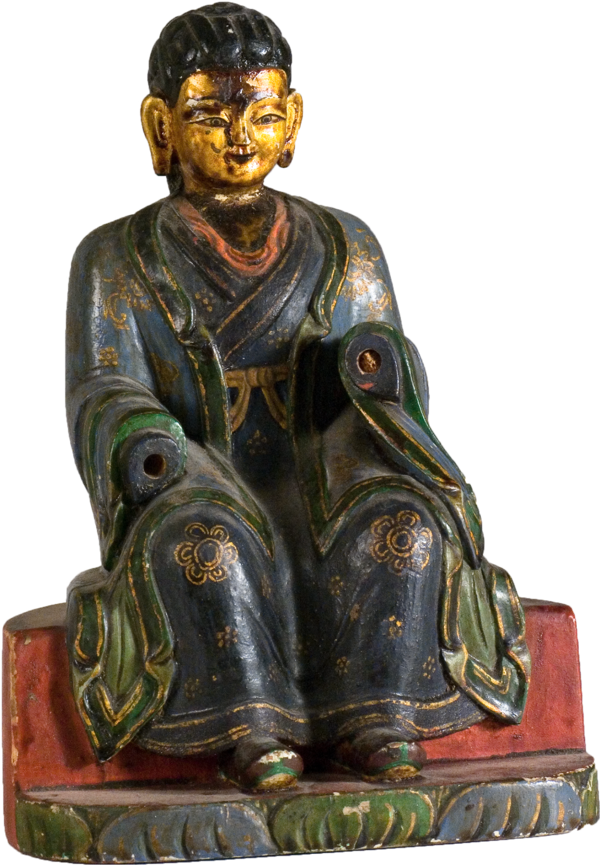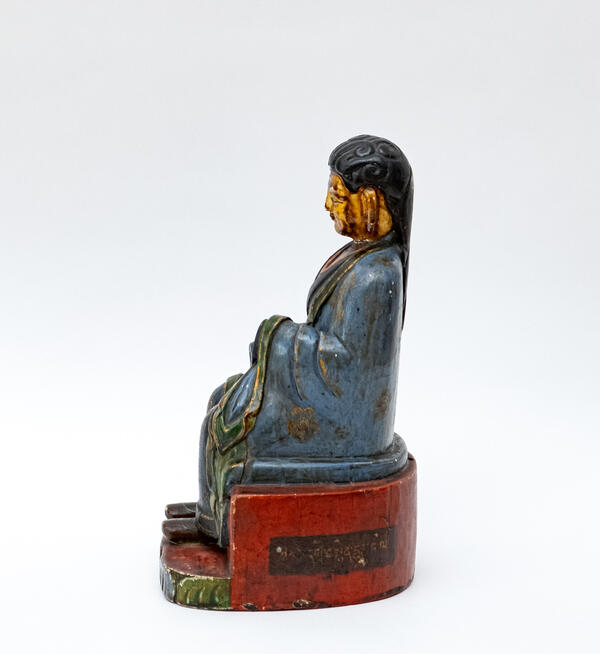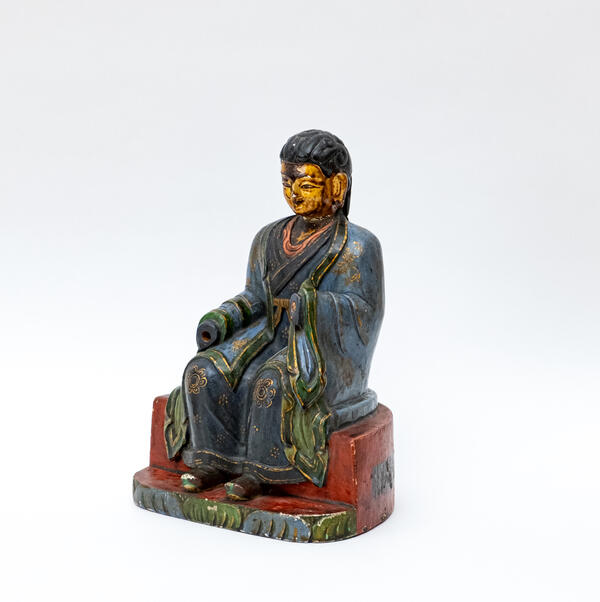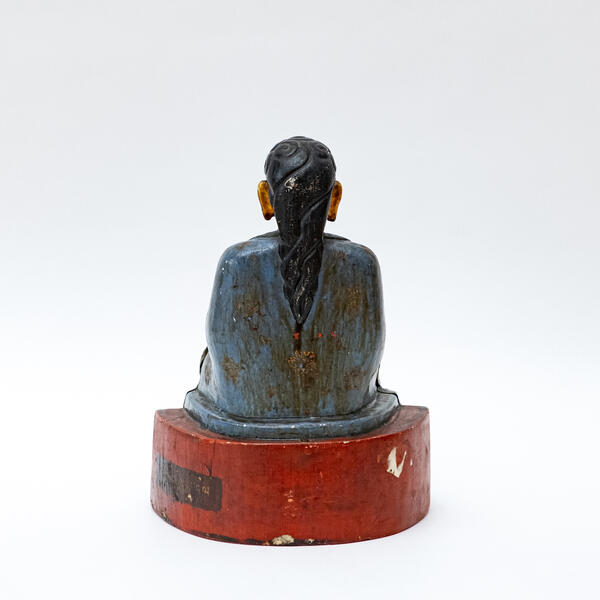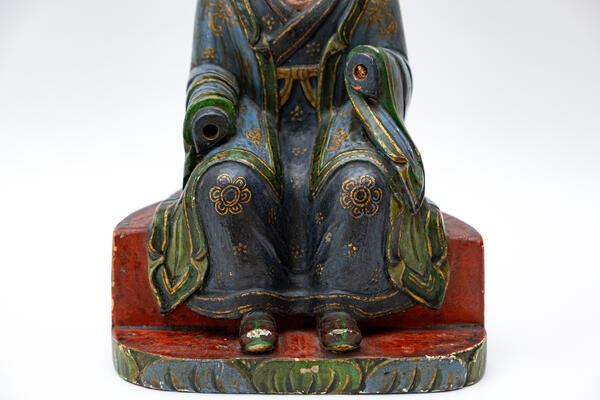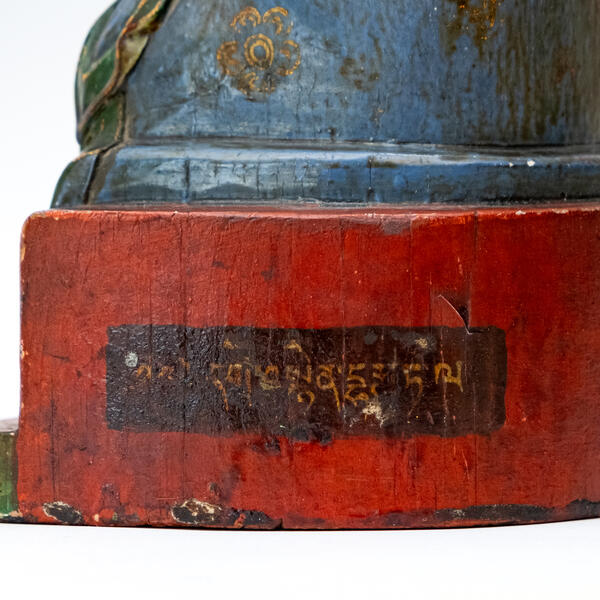Buddhism had a great influence on the traditional culture of the Mongols. It penetrated into all spheres of people’s life, affecting calendar holidays, wedding ceremonies, maternity and funeral rites, and folk medicine. The collection of the Sakha Republic National Art Museum features a carved wooden figure of Upasaka Dharmatala. The exhibit is included in the section “Art of the East.”
Upasaka Dharmatala was a follower of the Buddha’s teachings, a faithful companion of the Buddhist apostles-arhats, guardians of the Buddha’s teachings, who achieved complete liberation from unwholesome states of mind and from the endless cycle of rebirth. They are considered a model of righteous behavior in the world. Upasaka Dharmatala was the first lay person to achieve the spiritual state of an arhat, that is, the perfect, highest state of the human soul, characterized by absolute tranquility.
Upasaka is depicted with long hair, sitting in a simple blue robe (monks had to shave their heads regularly and wear traditional orange-colored clothes). With his calm, feminine, plump face detached from everything around, Upasaka resembles the usual images of the Buddha, if not for the braid behind his back. Upasaka is a layman, a helper of faith, who takes a vow to observe the five precepts: to abstain from killing, stealing, committing adultery, lying, and taking intoxicants. Those who follow these rules are called Upasaka (man) or Upasika (woman). The foundation of these precepts is compassion and belief in karmic consequences.
A lay Buddhist can attain the heavens only through
the strength of their faith and love for the Buddha. In some sources, faith is
listed among the qualities leading a Buddhist to rebirth in heaven along with
such a virtue as morality. Observing the five precepts is a part of regular
ritual practice for lay people, performed both at home and in the local temple.
The image of Upasaka, despite its outward composure, is characterized by deep
emotional content. The whole appearance of Upasaka is filled with sublime
simplicity and nobility.

